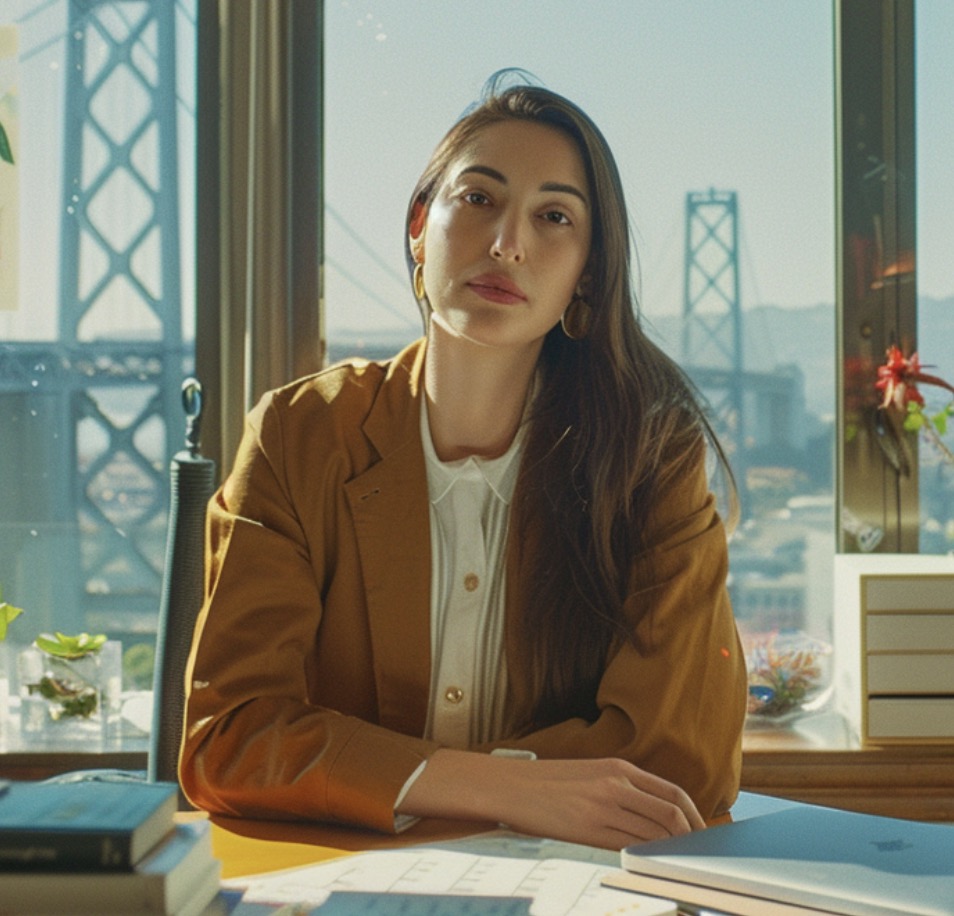Italy's rich agricultural history features traditional farm animals that play an essential role in shaping local diets and cultures. You'll find breeds like Chianina cattle, prized for their meat, and Ancona chickens, known for their prolific egg-laying. Additionally, the endangered Napoletana goat aids in promoting biodiversity, while unique sheep breeds like Appenninica contribute to high-quality wool and meat production. Each breed carries its own legacy, intertwined with regional customs and sustainable practices. Discovering the stories behind these animals helps you appreciate their significance in Italy's agricultural landscape even more.
Key Takeaways
- Italy features diverse traditional farm animal breeds, including Chianina cattle, Ancona chickens, and Napoletana goats, essential for agriculture and cuisine.
- Chianina cattle, the tallest breed, are prized for their high meat quality and adaptability in farming conditions.
- Ancona chickens are known for their prolific egg production and unique plumage, enhancing Italian culinary traditions.
- The endangered Napoletana goat is vital for sustainable farming, highlighting the importance of biodiversity in agriculture.
- Conservation of traditional breeds is crucial to maintain genetic diversity and resist threats from industrial farming practices.
Overview of Italian Farm Animals
When you plunge into the world of Italian farm animals, you'll discover a rich tapestry of breeds that have shaped the country's agricultural landscape. Italy boasts a diverse array of traditional farm animals, each with unique characteristics and historical significance.
One of the most notable ancient breeds is the Chianina cattle, revered for its impressive size and exceptional meat quality, particularly in Tuscany, Umbria, and Lazio. Studies indicate that animals, much like humans, can form emotional connections, which enhances their role in traditional farming communities as feline behavior reflects a deep bond.
You'll also find Ancona chickens, known for their prolific egg-laying abilities, producing over 200 eggs annually. Their striking plumage and agility make them a favorite among farmers.
In the Campagna region, the Agerolese cow stands out for its high milk production, essential for traditional Italian cheeses. Weighing around 900 pounds, this rare breed showcases the importance of local livestock.
Additionally, the endangered Napoletana goat plays an important role in preserving biodiversity. Its high milk yield supports local ecosystems in the Naples area of Campania.
These animals not only contribute to Italy's agricultural practices but also reflect the country's deep-rooted relationship with its ancient breeds, ensuring a sustainable future for traditional farming.
Traditional Italian Cattle Breeds

When you think of traditional Italian cattle breeds, the Chianina stands out for its impressive size and high-quality beef, especially in the famous Fiorentina steak.
This breed is renowned not only for its meat but also for its adaptability to various farming conditions, making it a key player in sustainable agriculture.
But that's just the beginning; there are other notable breeds like the La Piemontese and Maremmana that offer unique qualities and benefits.
For example, clogging remedies can be applied metaphorically to the importance of maintaining diverse livestock to facilitate a healthy agricultural ecosystem.
Let's explore these remarkable breeds and what makes them integral to Italy's agricultural heritage.
Chianina Cattle Overview
Chianina cattle, hailing from the picturesque regions of Tuscany, Umbria, and Lazio, represent one of the oldest and most impressive cattle breeds in the world. With a history that dates back over 2,200 years, this breed was even documented by Columella in 55 AD.
Known for their remarkable size, Chianina bulls can reach heights of 1.8 meters (5 feet 11 inches) and weigh over 1,600 kilograms (3,500 pounds), making them the tallest and heaviest cattle breed globally. The breed's resilience and ability to thrive in various environments contribute to its popularity among farmers, paralleling the benefits of diversification of retirement portfolio in financial planning.
You'll appreciate the breed's high muscle-to-fat ratio and exceptional growth rates, which can exceed 2 kilograms (4.4 pounds) per day. This makes them ideal for premium meat production. The prized Fiorentina steak, a culinary specialty, showcases their high quality meat, often sold at premium prices with quality assurance branding.
The official herdbook for Chianina was established in 1933, ensuring the breed's preservation and quality. By 2010, there were 47,236 registered Chianina in Italy, primarily found in areas renowned for traditional cattle farming.
This breed's legacy continues to thrive, enriching Italy's agricultural heritage and culinary scene.
Other Notable Breeds
Italy boasts a rich tapestry of traditional cattle breeds, each with unique characteristics that contribute to the country's diverse agricultural landscape. Among these, the Podolica breed stands out as a resilient dual-purpose type, thriving in central and southern Italy. Its slow growth rate promotes natural grazing practices, making it ideal for sustainable farming.
Additionally, careful breeding has resulted in dogs like the Maltipoo, known for their friendly temperament and adaptability, which reflects the importance of nurturing in animal husbandry the significance of dog health.
The La Romagnola breed is renowned for producing tender, lean beef cattle with excellent taste, particularly in mountainous regions. It features two subspecies that adapt well to challenging terrains.
Then there's La Piemontese, often called "Red Gold" due to its high slaughter yield and nutritional benefits, thriving in the humid northern climate with marbled fat that enhances flavor.
The Maremmana breed, characterized by its bright red meat, excels in harsh conditions, promoting high-quality meat production through natural pasture growth.
Furthermore, the Sardo Modicana, a robust breed from Sardinia, is valued for its exceptional flavor and traditional grazing methods, though it has a limited meat yield. This breed serves both as a source of beef and a working animal, highlighting the versatility of Italy's traditional cattle.
Notable Poultry Breeds in Italy

When exploring notable poultry breeds in Italy, you'll find the Ancona chicken stands out for its impressive egg-laying abilities and unique appearance.
This breed not only showcases the rich agricultural history of Italy but also highlights the importance of poultry in local farming practices.
Additionally, the sustainability of traditional farming methods, such as those used in geothermal energy in North Carolina, can enhance the overall eco-friendliness of poultry farming.
Understanding these characteristics helps you appreciate the cultural significance of these birds in Italian cuisine and traditions.
Ancona Chicken Characteristics
The Ancona chicken stands out among notable poultry breeds, thanks to its striking mottled plumage of black and white feathers that captivates both farmers and poultry enthusiasts alike. Originating from the east coast of Italy, this unique breed isn't just a pretty face; it's also an excellent layer, producing over 200 eggs annually while exhibiting low broodiness. This makes the Ancona chicken a productive choice for your flock.
Understanding cultural significance in traditional livestock breeds can enhance appreciation for their roles in agricultural history.
Influenced by Leghorn genetics, Ancona chickens are adaptable and robust, thriving in various environments. Their ability to fly well enhances their foraging skills and helps them escape predators, which is particularly beneficial in free-range settings. As you consider raising Ancona chickens, you'll appreciate their hardiness and resilience.
Recently gaining popularity in the U.S., these birds are sought after for both their egg-laying capabilities and their ornamental beauty. Whether you're a seasoned poultry keeper or a novice, adding Ancona chickens to your farm can bring both productivity and aesthetic appeal.
With their unique characteristics, these chickens are a delightful addition to any poultry enthusiast's collection.
Historical Significance of Poultry
Poultry breeds in Italy have a rich historical significance, showcasing the country's agricultural heritage and diversity. One notable breed is the Ancona chicken, developed on Italy's east coast, famous for its unique plumage and impressive egg-laying capabilities, producing over 200 eggs annually.
Then there's the Leghorn, which originated in Livorno; it's known for its prolific egg production and adaptability, making a substantial impact on the global poultry industry. Understanding the role of emotional health, such as supporting an elderly mother with BPD, can also reflect the nurturing aspects found in traditional farming practices.
The Sicilian Buttercup stands out with its distinctive rose comb and dual-purpose use in both egg and meat production, thriving in warmer climates.
In the Piedmont region, the Bionda Piemontese is valued for its high-quality meat and resilience, reflecting traditional farming practices.
Finally, the Garfagnina chicken, indigenous to Tuscany, is celebrated for its hardiness and foraging ability, often enhancing local culinary traditions with its flavorful meat and eggs.
These breeds not only highlight Italy's diverse poultry heritage but also demonstrate the integral role of poultry in regional economies and cuisines, ensuring that these traditions continue to thrive.
Unique Italian Goat Varieties

As you explore the world of Italian livestock, you'll discover that unique goat varieties play an important role in the country's agricultural landscape. Among these, the Napoletana goat stands out. Developed in the Naples area of Campania, this dual-purpose breed is not only resilient but also crucial for sustainable farming practices. With only a few hundred individuals remaining, its endangered status underscores the significance of preserving biodiversity.
Here's a glimpse of unique Italian goat varieties:
| Goat Variety | Key Features | Regional Significance |
|---|---|---|
| Napoletana goat | High milk yield, adaptable | Essential for local cheese making |
| Camosciata | Robust, excellent for meat | Valued for traditional dishes |
| Saanen | High milk production | Popular in dairy farms |
| Maltese | Unique fur, rich milk | Cultural heritage in Sicily |
| Girgentana | Hardy, forager | Important for local ecosystems |
The Napoletana goat's milk contributes to regional gastronomic traditions, playing an important role in local economies and cultural heritage. Embracing these unique varieties is essential for sustainable agriculture in Italy.
Heritage Sheep Breeds of Italy

Exploring the rich tapestry of heritage sheep breeds in Italy reveals a fascinating array of animals that have shaped the country's agricultural practices and culinary traditions.
One standout is the Appenninica Sheep, developed in the 1970s, which excels in meat production while offering decent medium-coarse wool. Additionally, these breeds contribute to local economies and cultural heritage, reflecting the importance of sustainable agricultural practices in Italy, such as protecting savings through diversification.
Then there's the Sardo Modicana, a robust breed from Sardinia, celebrated for its exceptional flavor, thanks to traditional grazing practices that enhance marbling, despite its limited meat yield.
You can't overlook the ancient Pecora di Vallespluga, resilient and adaptable to harsh alpine environments, known for its high-quality milk and meat.
In Tuscany, the Massese Sheep shines with its high wool yield and the production of traditional cured meats, highlighting its significance in local gastronomy.
Finally, the Laticauda Sheep from the central Apennines thrives in rugged terrains, contributing milk for local cheese production and reflecting its cultural importance.
These heritage sheep breeds of Italy not only enrich the country's agricultural landscape but also complement the renowned Italian beef, celebrating the deep connections between livestock and local cuisine.
Importance of Biodiversity in Agriculture

Biodiversity in agriculture plays an essential role in guaranteeing food security and resilience in ecosystems. By maintaining a variety of species, you support the adaptability of your farming practices to climate changes and disease outbreaks. This diversity is especially vital as traditional breeds, like Chianina cattle and Ancona chickens, offer unique traits that enhance productivity and sustainability.
Additionally, the importance of biodiversity can be seen through the cultivation of heirloom seeds, which promote genetic diversity in crops.
Here are some key benefits of biodiversity in agriculture:
- Enhanced Resilience: Diverse livestock breeds can better withstand environmental changes and disease threats.
- Cultural Preservation: Traditional breeds help maintain local cultures and culinary practices, enriching regional cuisines, like those using native breeds for Parmigiano Reggiano cheese.
- Genetic Diversity: Protecting endangered breeds, such as the Napoletana goat and Agerolese cow, contributes to the overall health of agricultural systems.
However, industrial farming practices threaten this biodiversity, leading to a decline in traditional breeds.
It's essential to support conservation efforts and sustainable breeding practices to protect these unique animals. By doing so, you not only safeguard biodiversity but also guarantee the future sustainability of agriculture and preserve valuable cultural heritage.
Frequently Asked Questions
What Animals Are Farmed in Italy?
In Italy, you'll find a variety of farmed animals, including cattle, goats, sheep, and chickens. Each breed offers unique traits, contributing to the country's rich agricultural landscape and culinary traditions.
What Breed of Cattle Originated in Italy?
You might be interested to know that the Chianina breed of cattle originated in Italy. It's one of the oldest breeds, renowned for its impressive size and high-quality beef, especially famous for the Fiorentina steak.
Which of These Breeds Was Used by Romans in Italy as Draft Animals and Is the Largest Breed of Cattle?
Imagine you're on a Roman farm, witnessing the impressive Chianina cattle at work. This breed, used as draft animals, stands as the largest cattle type, showcasing strength and size that marvels all who see them.
What Is the History of the Piedmontese Breed?
The Piedmontese breed has roots in the Piedmont region, recognized since the 19th century for its double-muscling trait. You'll appreciate its efficient growth, lean meat, and adaptability, making it a valuable choice for farmers.
Conclusion
In Italy, over 100 traditional animal breeds are recognized, showcasing the country's rich agricultural heritage. By preserving these breeds, you're not only supporting biodiversity but also ensuring the survival of unique flavors and products. Did you know that 75% of the world's food comes from just 12 plant and 5 animal species? By embracing Italy's traditional farm animals, you're helping to safeguard a more diverse and resilient food system for future generations. So let's celebrate and protect this invaluable heritage!










